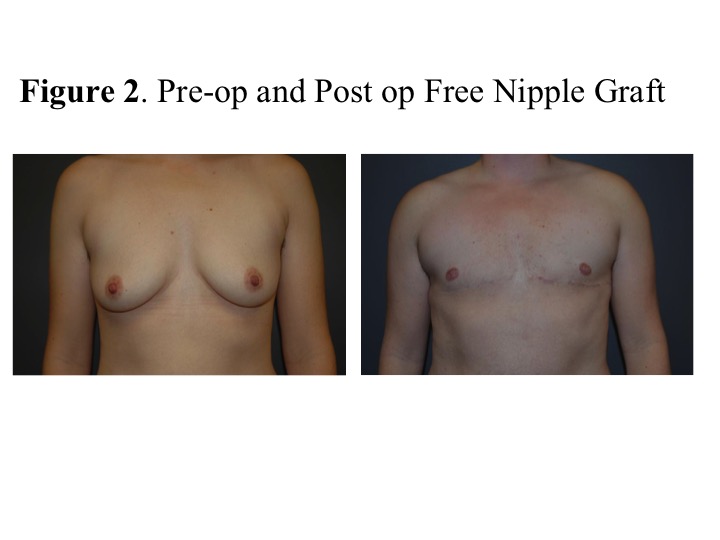Back to 2015 Annual Meeting
Chest Surgery in Female to Male Transgender Individuals
Michael Frederick, MD, Aaron Berhanu, BS, Richard Bartlett, MD.
Harvard, Boston, MA, USA.
Background: Societal awareness of transgender individuals has led to increased acceptance and demand for gender confirming surgery. In female to male transsexuals, the most common procedure is removal of breast tissue to masculinize the chest.
Methods: 88 transgender patients underwent either a subcutaneous nipple sparing mastectomy (NSM) with or without a periareolar mastopexy or nipple reduction, or bilateral mastectomies with free nipple grafts (FNG) with or without nipple reduction. Surgical techniques are discussed. (See figure 1) Demographic data, use of testosterone, specimen weights, rates of wound dehiscence, infection, hematoma, hypertrophic scars, nipple loss and revision surgery were all assessed.
Results: Of the 88 patients in the study, 41 underwent NSM and 48 underwent mastectomy with a FNG. (See Figure 2) Patients undergoing NSM were 4.1 times more likely to have a hematoma compared to patients undergoing mastectomy with FNG (p-value 0.80). Only one patient who underwent NSM required revision whereas 5 patients in the FNG patient population underwent revision. Patients were more likely to have hypertrophic scarring with the FNG technique (0% vs. 25%, p<0.01) There were no infections, no wound dehiscence, and no nipple loss in any patient. 83% of patients were very satisfied with their result and 100% would recommend this procedure to other transgender individuals.
Conclusion: Female to male transgender mastectomy can be performed with low complication rates and high satisfaction. NSM were more likely to have a hematoma than patients with a FNG.  
Back to 2015 Annual Meeting
|




